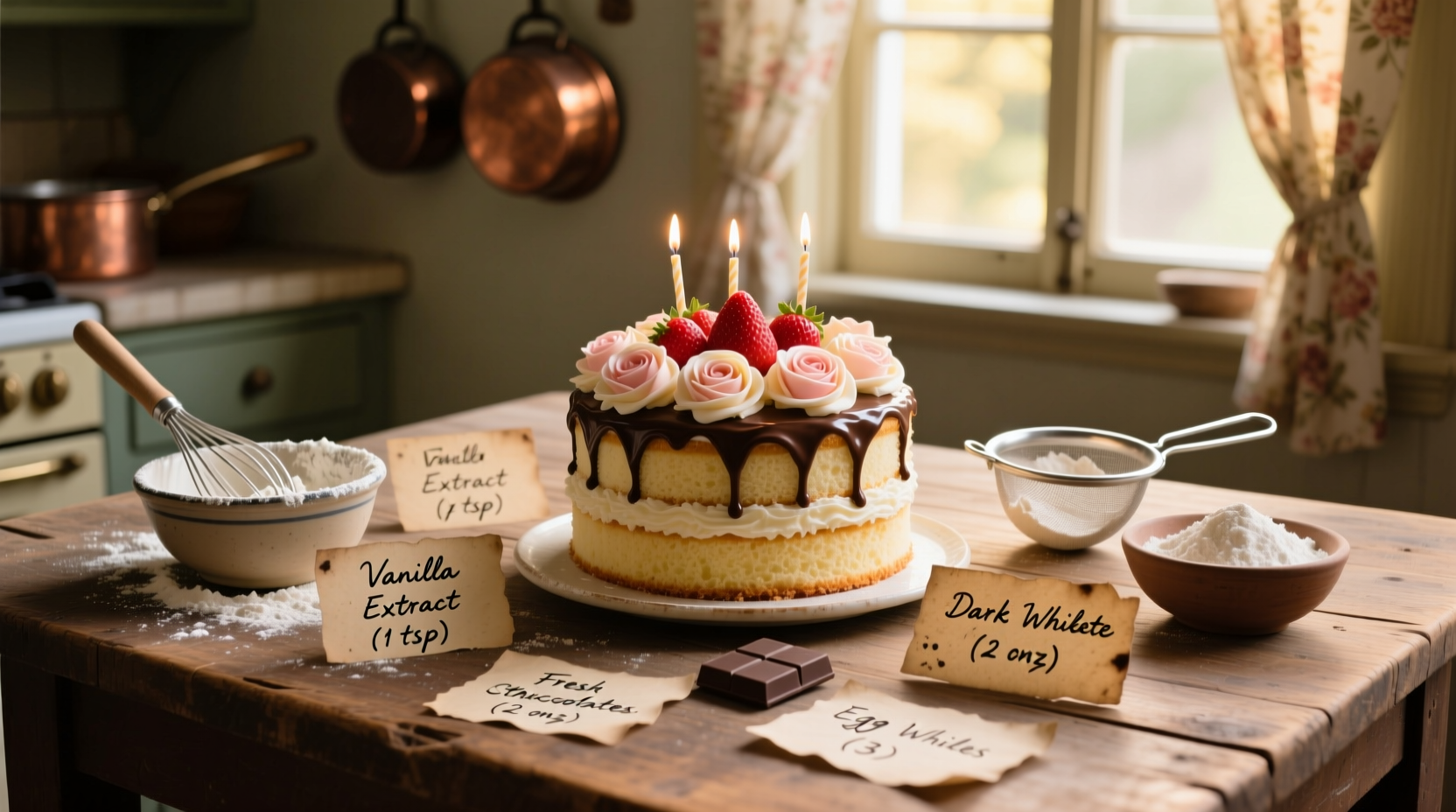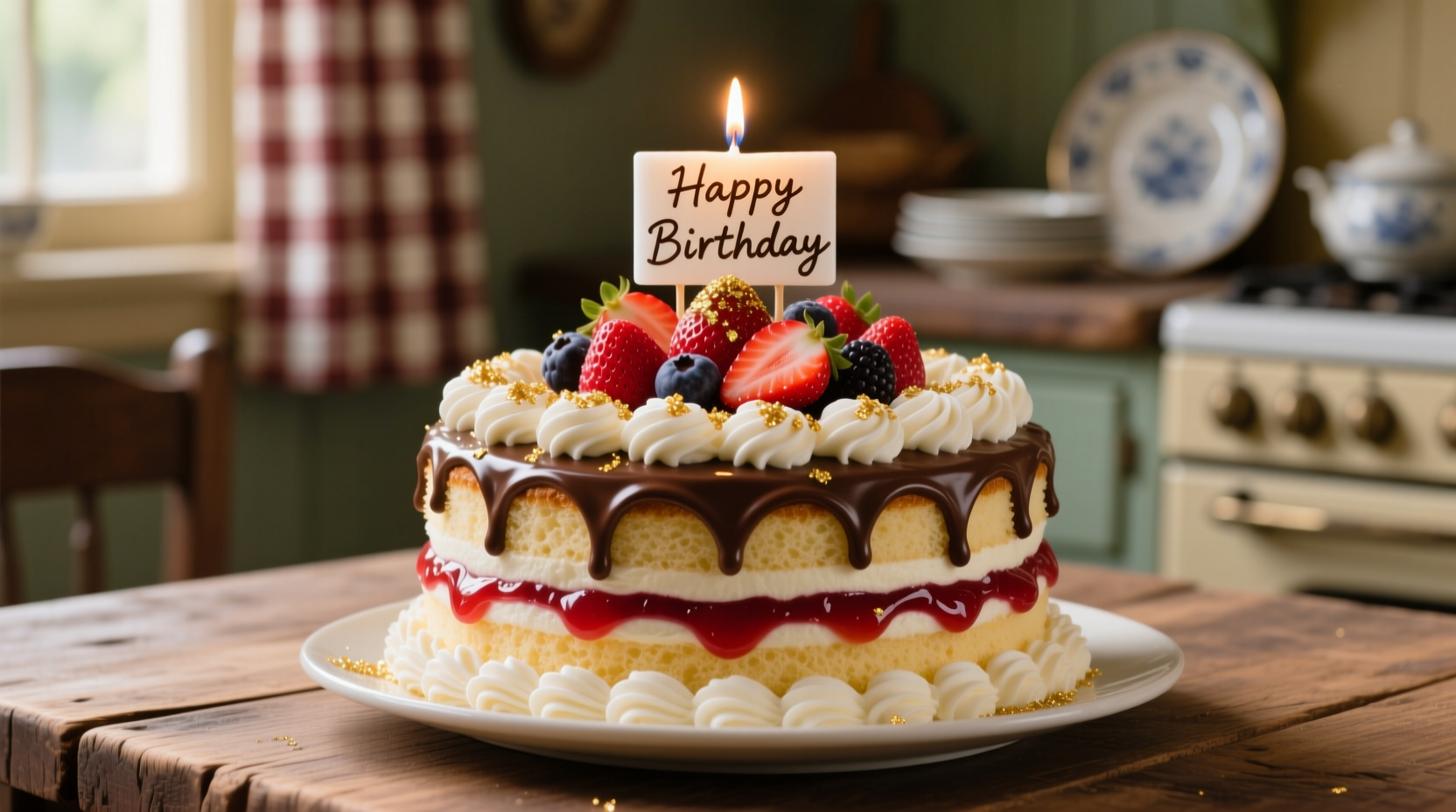The Surprising Truth Behind Birthday Cake Flavor
When you bite into birthday cake-flavored ice cream, cookies, or cake mix, you're experiencing a flavor profile specifically engineered to capture the essence of celebration. Unlike straightforward flavors like chocolate or strawberry, birthday cake flavor represents a complex sensory experience that combines multiple elements to trigger nostalgic memories of childhood parties.
Decoding the Flavor Profile: What Makes Birthday Cake Taste Like Birthday Cake
Food scientists and flavor chemists have perfected birthday cake flavor through careful analysis of what makes traditional birthday cakes taste distinctive. The flavor profile contains three essential components that work together to create that unmistakable celebration taste:
1. The Vanilla Foundation
Vanilla serves as the primary base note in birthday cake flavor, but not just any vanilla. Most commercial birthday cake flavors use a combination of:
- Real vanilla extract for depth and complexity
- Synthetic vanillin for consistent, strong vanilla notes
- Vanilla bean specks (in premium products) for visual authenticity
2. The Buttery Undertones
The second critical component is buttery notes, typically created using compounds like diacetyl and acetoin. These give birthday cake flavor its rich, creamy quality that distinguishes it from plain vanilla. According to the Flavor and Extract Manufacturers Association (FEMA), these compounds occur naturally in dairy products but are often enhanced in artificial flavorings to create that "buttercream frosting" sensation (femaflavor.org/flavor-science).
3. The "Cake" Essence
The most elusive component is what flavorists call the "cake note"—a subtle blend that mimics the taste of baked cake itself. This includes:
- Sugar caramelization notes
- Light egg custard elements
- Subtle wheat or flour undertones
- Trace amounts of baking powder/soda notes
| Flavor Component | Natural Source | Commercial Equivalent | Percentage in Typical Blend |
|---|---|---|---|
| Vanilla Base | Vanilla beans | Vanillin + ethyl vanillin | 55-65% |
| Butter Notes | Dairy products | Diacetyl + acetoin | 20-25% |
| Cake Essence | Baked goods | Propylene glycol + esters | 15-20% |
| Sweet Enhancers | Sugar | Sucralose + maltol | 5-10% |
How Birthday Cake Flavor Evolved: A Timeline
Birthday cake flavor as we know it today didn't emerge overnight. Its development reflects changing baking traditions and food science advancements:
- 1950s: Post-war baking boom introduces boxed cake mixes, creating standardized "birthday cake" taste profiles
- 1970s: Food scientists begin analyzing the chemical composition of popular cake flavors
- 1980s: First commercial "birthday cake" flavorings appear for bakeries and ice cream manufacturers
- 1990s: Birthday cake flavor expands beyond baked goods into candies, beverages, and dairy products
- 2000s: "Funfetti" version gains popularity, adding rainbow sprinkles to the flavor profile
- 2010s-Present: Artisanal versions emerge with premium ingredients and regional variations
Birthday Cake Flavor vs. Vanilla: Key Differences
Many people assume birthday cake flavor is just vanilla with sprinkles, but the distinction runs much deeper. While vanilla focuses primarily on the bean's characteristic flavor compounds, birthday cake flavor incorporates additional elements that create a more complex sensory experience.
According to research published by the Institute of Food Technologists, consumers consistently identify birthday cake flavor as having "warmer," "richer," and "more celebratory" qualities than standard vanilla (ift.org/food-technology). This perception difference explains why birthday cake flavor commands premium pricing in many product categories.
Where Birthday Cake Flavor Shines: Popular Applications
Birthday cake flavor has expanded far beyond actual cakes. Today, you'll find it in numerous products across various categories:
Bakery Products
- Boxed cake mixes (the original application)
- Frosting and filling products
- Cupcakes and celebration cakes
- Cookies and cake pops
Dairy and Frozen Treats
- Ice cream and frozen yogurt
- Milkshakes and smoothies
- Yogurt and pudding
Beverages and Confections
- Coffee creamers and flavored coffees
- Candies and gummies
- Protein powders and supplements
- Seasonal beverages (especially around summer birthdays)

Recreating Authentic Birthday Cake Flavor at Home
While commercial birthday cake flavoring is convenient, you can create a remarkably close approximation using ingredients you likely already have in your kitchen. Professional bakers recommend this approach for the most authentic homemade birthday cake flavor:
Basic Birthday Cake Flavor Blend
- 2 parts pure vanilla extract
- 1 part melted butter (cooled)
- 1/2 part almond extract (for depth)
- 1/4 part melted white chocolate (for richness)
- Pinch of salt (to enhance flavors)
Mix these ingredients thoroughly and use in place of regular vanilla extract in cake recipes, frostings, or even to flavor ice cream bases. The key is balancing the buttery notes without making the flavor taste greasy.
Regional Variations in Birthday Cake Flavor
Interestingly, birthday cake flavor varies significantly by region, reflecting local baking traditions and ingredient availability:
- North America: Stronger buttery notes, sweeter profile, often includes "funfetti" (rainbow sprinkles)
- Europe: More delicate vanilla notes, less sweetness, often incorporates egg custard elements
- Asia: Lighter profile with subtle matcha or red bean influences in some regions
- Latin America: Often includes hints of cinnamon or dulce de leche notes
These regional differences explain why birthday cake-flavored products can taste noticeably different when purchased in various countries, even from the same global brand.
Common Misconceptions About Birthday Cake Flavor
Several myths persist about birthday cake flavor that deserve clarification:
- Myth: Birthday cake flavor is just vanilla with food coloring
Reality: The flavor profile is chemically distinct from vanilla, with additional compounds creating the buttery, cake-like notes - Myth: All birthday cake flavors taste the same
Reality: Significant variations exist between brands and regions, with some focusing on buttercream notes while others emphasize cake essence - Myth: Birthday cake flavor contains actual cake
Reality: Most commercial birthday cake flavorings are synthetic compounds designed to mimic the taste, not actual cake ingredients - Myth: Birthday cake flavor is seasonal and only available around summer
Reality: While sales peak during summer birthday season, birthday cake flavor products are available year-round
Why Birthday Cake Flavor Resonates Emotionally
Beyond the chemical composition, birthday cake flavor triggers powerful emotional responses. Research from the Monell Chemical Senses Center shows that flavor memories associated with positive social experiences (like birthday celebrations) become deeply embedded in our neural pathways (monell.org/sensory-science).
This explains why birthday cake flavor often evokes stronger nostalgic responses than other dessert flavors—it's intrinsically linked to childhood celebrations, family gatherings, and positive social experiences across many cultures.
Choosing Quality Birthday Cake Flavor Products
When selecting birthday cake flavor products, look for these indicators of quality:
- Ingredient transparency: Products listing specific flavor components rather than just "natural and artificial flavors"
- Balanced profile: Should have noticeable vanilla base with complementary buttery notes, not one-dimensional sweetness
- Application suitability: Different formulations work better for baking versus dairy applications
- Reputable sources: Brands with clear manufacturing standards and quality control
Professional bakers recommend sampling small quantities before purchasing in bulk, as flavor perception can vary significantly between individuals based on their personal birthday cake memories.
Conclusion: More Than Just a Flavor
Birthday cake flavor represents a fascinating intersection of food science, cultural tradition, and emotional memory. What began as a practical solution for consistent cake flavors has evolved into a globally recognized taste profile that transcends its original application.
Understanding the components that create authentic birthday cake flavor allows you to make more informed choices when selecting products or recreating the flavor at home. Whether you're baking for an actual birthday celebration or simply enjoying the nostalgic taste, recognizing the craftsmanship behind this seemingly simple flavor enhances the entire experience.











 浙公网安备
33010002000092号
浙公网安备
33010002000092号 浙B2-20120091-4
浙B2-20120091-4